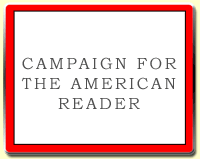 One of his five best books on theater as told to the Wall Street Journal:
One of his five best books on theater as told to the Wall Street Journal:Shakespeare's Insults: Educating Your WitRead about the other books on the list.
by Wayne F. Hill and Cynthia J. Ottchen (1995)
This collection of some 4,000 of the Bard's insults—4,000 of them!—was gleefully put together by two American students when they were studying at Cambridge University. The Hill & Ottchen team has never let me down. Shakespeare's insults, muscular abuse and common profanities enrich his plays like a lethally merry feast. They are a tonic in these indecorous times: "He is not the flower of courtesy" ("Romeo and Juliet"). They condemn with wit: "The tartness of his face sours ripe grapes" ("Coriolanus"). There's something for everyone. The stinging insult that offers sound advice: "Sell when you can, you are not for all markets" ("As You Like It"). The balefully dismissive: "All that is within him does condemn itself for being there" ("Macbeth"). Even the contemptuously prosaic: "You three-inch fool!" ("The Taming of the Shrew"). There are also abundant examples of insults that are so rude, and lewd, that they cannot be done justice to here. That is what the theater is for.
--Marshal Zeringue


















































